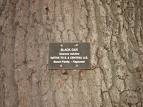Smoothbark Oak Tree Information
Images of Smoothbark Oak:






Smoothbark Oak grows in the following 36 states and provinces:
Alabama, Arkansas, Connecticut, Delaware, Florida, Georgia, Illinois, Indiana, Iowa, Kansas, Kentucky, Louisiana, Maine, Maryland, Massachusetts, Michigan, Minnesota, Mississippi, Missouri, Nebraska, New Hampshire, New Jersey, New York, North Carolina, Ohio, Oklahoma, Ontario, Pennsylvania, Rhode Island, South Carolina, Tennessee, Texas, Vermont, Virginia, West Virginia, WisconsinInformation about Smoothbark Oak:
The Quercus Velutina is commonly known as the Black Oak, Quercitron, Quercitron Oak, Smooth-bark Oak, Smoothbark Oak, Yellow Butt Oak, Yellow Oak, Yellow-bark Oak as well as Yellowbark Oak.
The currently accepted scientific name of black oak is Quercus velutina Lam. . It has been placed within the subgenus Erythrobalanus, or red (black) oak group . The following rarely used forms have been distinguished on the basis of leaf lobe variation and pubescence : Q. v. f. macrophylla (Dippel) Trel. Q. v. f. dilanianta Trel. Q. v. f. pagodaeformis Trel. There appears to be complete integration between the forms . Some northern populations of black oak in the Lower Peninsula of Michigan have smaller acorns with less cup cover, lighter inner bark, smaller winter buds, and a more branching growth form than populations in southern Indiana . Voss suggests that these may be hybrids between black oak and northern red oak (Q. rubra) or scarlet oak (Q. coccinea). Black oak hybridizes with the following species : x Q. coccinea (scarlet oak): Q. X fontana Laughlin x Q. ellipsoidalis (northern pin oak): Q. X palaeolithicola Trel. x Q. falcata (southern red oak): Q. X willdenowiana (Dippel) Zabel Q. X pinetorum Moldenke x Q. ilicifolia (bear oak): Q. X rehderi Trel. x Q. imbricaria (shingle oak): Q. X leana Nutt. x Q. incana (bluejack oak): Q. X podophylla Trel. x Q. marilandica (blackjack oak): Q. X bushii Sarg. x Q. nigra (water oak): Q. X demarei Ashe x Q. palustris (pin oak): Q. X vaga Palmer & Steyerm. x Q. phellos (willow oak): Q. X filialis Little x Q. rubra (northern red oak): Q. X hawkinsiae Sudw. x Q. shumardii (Shumard oak): Q. X discreta LaughlinBlack oak is widely distributed throughout the eastern and central United States and extreme southwestern Ontario, Canada. In the United States, black oak occurs from southwestern Maine west to southern Wisconsin and southeastern Minnesota; south through Iowa to eastern Nebraska, eastern Kansas, central Oklahoma, and eastern Texas; and east to northwestern Florida and Georgia .Black oak is a common component of many eastern and central upland deciduous forests. Black oak also occurs in savannas in the transition zone between the eastern deciduous forests and the western prairies. The following published classifications list black oak as a dominant or codominant species: Deciduous forest Classification of forest ecosystems in Michigan The natural communities of South Carolina A classification of the deciduous forest of eastern North America Forest vegetation of the lower Alabama Piedmont Old-growth forests within the Piedmont of South Carolina Plant communities of the Coastal Plains of North Carolina and their successional relations Ecological species groups of oak ecosystems of southeastern Michigan Presettlement vegetation of Lake County, Indiana Some of the information provided here is attributed to:Carey, Jennifer H. 1992. Quercus velutina. In: Fire Effects Information System, [Online]. U.S. Department of Agriculture, Forest Service, Rocky Mountain Research Station, Fire Sciences Laboratory (Producer). , available at the USDA Fire Effects Information System (FEIS) website